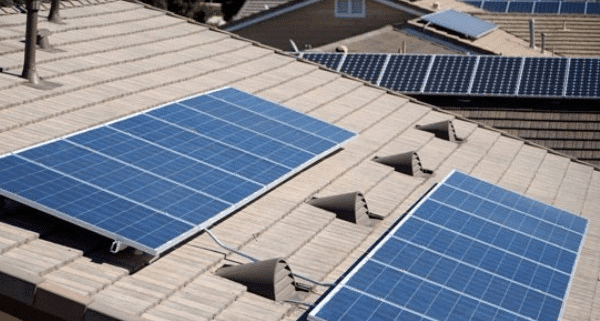Understanding The Cost of Solar Panels
The majority of home and business owners that install solar panels are doing so typically to “do the right thing” a few are taking the deep look at the return on investment down the road. As well as those who may be on the fence about whether to invest in a solar electricity systems, knowing how to calculate your return on investment would be invaluable in helping you make a decision.
But go ahead and Google “ROI solar energy” you’ll be flooded by various statistics and formulas each claiming to have the answer to your question. The simple answer is, calculating your prospective return on investment can be time consuming, but there’s no shortcuts to this process without having short changing your results.
Regarding Solar Panel Installation
Solar Power Return on Investment Calculations and Payback Period
The first step in calculating the solar panel cost and ROI is to establish your payback period also known as the point at which your current savings equal the cost of the photovoltaic (pv) system and also you break thru into pure earnings from your solar panel system. You do this in a 5-step process:
1. Establish your solar energy system net cost. Keep in mind that this is not automatically what you paid for the system. You will need to deduct any rebates or perhaps tax credits to come up with an exact cost. Local Pro Solar files all the required paperwork for you to claim almost all government incentives. Our method is a true turn-key system.
2. Determine how much energy the solar panels will collect based on the installation of your system. Local Pro Solar can help provide you with this exact information that may vary based on the amount of sunlight around your home or business and the placement of your solar panels, etc.
3. Look on your overall electric bill from your utility provider to find out how much you pay per kw hour (kWh). Many people forget to account for distribution charges. The precise way to calculate your genuine usage charges is to split your total bill by the level of hours of usage. Put another way, if you just increase the number of hours on your expenses by the kilowatt per hour fee your should see your total bill is higher than this particular calculation.
4. Calculate the whole benefit of a solar system including the power it generates per year and the SRECs that can be sold for additional income in return for the extra power generated.
5. Calculate the payback period and return on investment. The payback period could be the initial net investment split by the yearly benefit. Alternatively, the return on investment is calculated by dividing the initial investment into the yearly benefit to obtain a percentage of the initial investment that is returned each year. Typically it is our experience that a solar panel system returns 15% to 20% on initial investment!
How Complicated are the Forms ?
Local Pro Solar will use his expertise set up your solar panel system, and we will file for all the necessary records on your behalf to receive federal local and state grants, rebates, and incentives. Local Pro Solar will also perform the necessary administrative tasks to acquire SRECs to generate extra cash from your photovoltaic energy system. Included in the installation process each solar electric system also comes with a computer monitoring dashboard system which allows you to monitor your system’s performance.
Typical Costs of a Solar Power System
Depending on the desired location and design of your system, a conventional home installation ranges from 7 to 3 kilowatts and expenses between $18,000 to $40,500 to purchase.
Equipment Costs are about 45%
Solar panels: About a third with the cost of a residential solar system comes from the cost of solar panel systems, which can cost around $4,500-$12,1000.
Power inverter: The inverter converts DC to AC so you can connect directly to the grid, will surely cost $1,000-$3,000.
Mounting hardware: Based on your roof, you may need standoffs, rails, clips, etc., which cost all around $800 – $2,000.
Wiring: Wires along with wiring boxes, disconnects, conduits, as well as other electrical components often price around $1,000-$2,000.
Installation along with Permitting Costs: ~ 25%
System Installation: Before your systems installation starts generating electricity, you’ll need to pay for that cost of installation, which varies from $2,000-$4,000.
Permits & Fees: Nearby permitting and inspection fees can add over $2,500 for your solar costs. All in, permitting costs can total between $3,000-$6,000.
Sales, Advertising and marketing, and Operational Costs ~ 30%
Monitoring: Monitoring equipment and/or providers can cost up to a few 1000 dollars.
Maintenance/Repairs: These costs will be different, depending on the situation, and include the price of replacing the power inverted. Inverters typically must be replaced one or two times during the duration of your system.
Additional: Operational and also overhead costs can total about $4,000-$9,000 per installation.
Solar Rebate Offers
Incentives can help lower the expense of solar power systems. As a homeowner, you’re eligible to receive 30% off the total price of your photovoltaic (solar panel) system from the federal government in the form of a National Solar Tax Credit. If you do buy a home solar energy system, you could end up having to wait so long as 16 months to receive the main benefit of the tax credit.
Based on Local Pro Solar extensive experience, we have found our customers average a 15-20% return on investment according to a typical payback period of involving 4-7 years.
Do More, Live Green
To ensure your payback period is as short as you possibly can, Local Pro Solar can help you research and apply for grants, incentives, rebates as well as tax credits that lessen your out-of-pocket cost for solar panel system installation while recommending the best system to maximize your daily energy savings.

